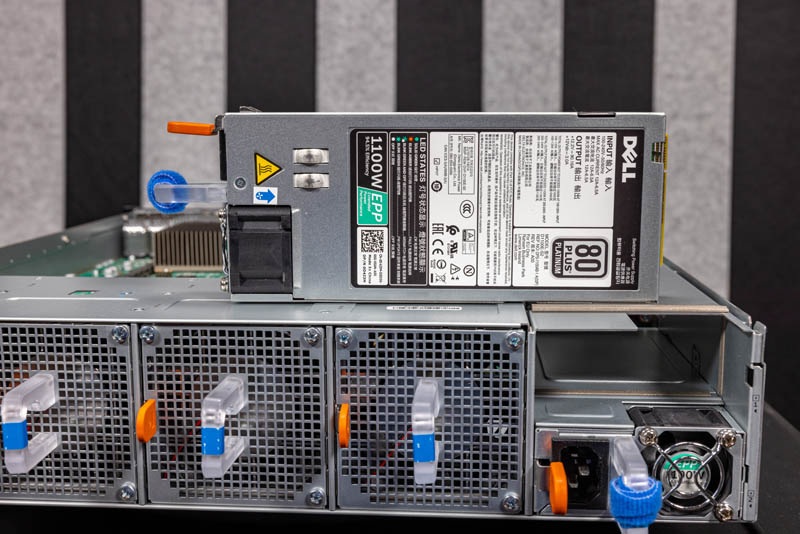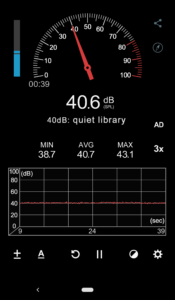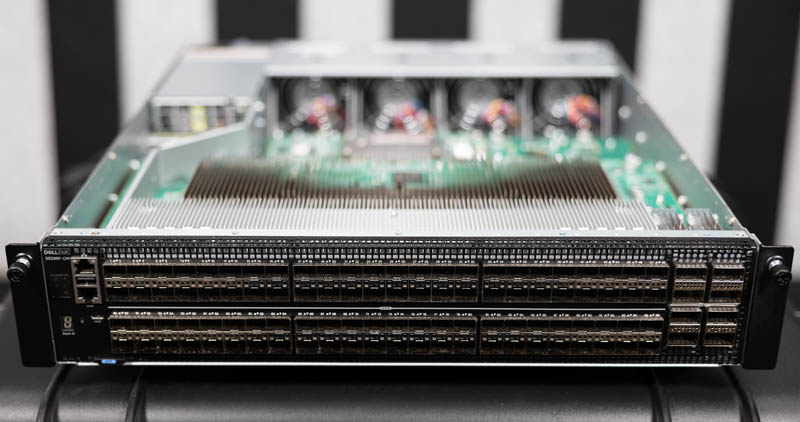Power Consumption and Noise
The switch itself comes with redundant 1.1kW PSUs that are high-efficiency 80Plus Platinum units.

Dell lists the typical power consumption at 457W which seems reasonable from what we have seen. We have not fully populated this with optics yet (there is a slow boat arriving with ours hopefully soon.) Partially filled and also using DACs on several ports, we are running in the mid 300W range. If one loads the switch with higher-power optics Dell says it has an 893W max. There is a large variation in these switches depending on what kind of pluggable components are being installed, so hopefully, this range is helpful. The reason that this switch has much higher power consumption versus the S5232F-ON, even though it is based on the same switch seems to be just the sheer number of optics one can install.

In terms of noise, this is certainly not a quiet switch. Without optics installed, it idles just above 40dba. This was actually about 1dba higher than the S5232F-ON. It is also something we wanted to test with this switch. One may assume that cooling the same ASIC and management controllers with unpopulated ports would lead to lower noise from slower spinning larger fans, and that was not what we saw in practice.
Fans ramp from there based on the traffic and optics connected. We would not recommend it even for a lightly sound isolated cabinet in an otherwise quiet office. This is a switch designed for data center racks, not necessarily edge deployments where racks may be close to quiet spaces.
Final Words
This is one of those tear-downs that was interesting for two reasons. First, getting to see a larger 96-port switch (or 104 ports if you want to include the 100GbE) is always interesting. Also, getting to see inside hardware that one normally does not get to is always fun. For those who cannot find documentation on what is inside these open networking switches, hopefully, this helps.

As a 2U switch, we were also able to test a number of theories we have seen in the STH forums and elsewhere that suggested that the larger fans and airflow channels would allow for quieter cooling. This is probably overkill for most edge locations, but as we start to see 25GbE move out of the data center and into broader distribution, it is at least something we wanted to investigate.

We also got to see some generational improvements between this system and the previous generation S5148F-ON that we reviewed. We covered a bit about why this was not a simple ~2 year upgrade and instead was effectively an overhaul of the line. That overhaul means that one can use features such as deploying these switches with SONiC. This is a bit more expensive than the 40GbE Arista switch we used in our, admittedly aging, get started with 40GbE SDN with Microsoft Azure SONiC for under $1K article. At the same time, this is actually a switch that many have in their data centers today.
Overall, this seems to be a fairly nice package. We are evaluating this switch for use as part of the big STH fiber build-out series. If it does get used, instead of just using 100GbE switches with break-outs, then you will certainly see more of it on STH in the near future.



